2/25/2024 - 3/02/2024
Climate in the News:
Described in our February Monthly Summary red flag warnings from the Texas Panhandle to Northern Arkansas were issued on the 26th. Due to favorable conditions, several large wildfires ignited in the Texas Panhandle last week. The largest of these fires include the Windy Deuce Fire in Moore County, Grape Vine Creek Fire in Gray County, and most notably the Smokehouse Creek Fire which started in Hutchinson County and spread to several other counties in Texas and Oklahoma by the next evening. As of March 3rd the Smokehouse Creek Fire is an estimated 1,076,638 acres and is 15% contained. At this time two deaths have been reported and many have lost their homes.
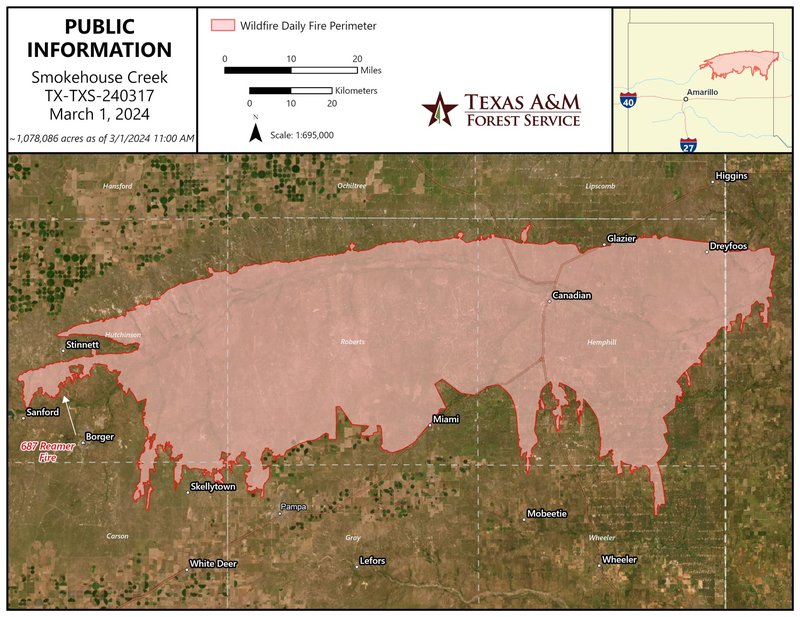
Weather Synopsis:
Conditions last week were conducive to the growth of fires. High wind gusts were common all throughout the week, with sustained winds at or above 20 mph. Low relative humidity conditions and very dry grass made it easy for a small spark to turn into a fire quickly.
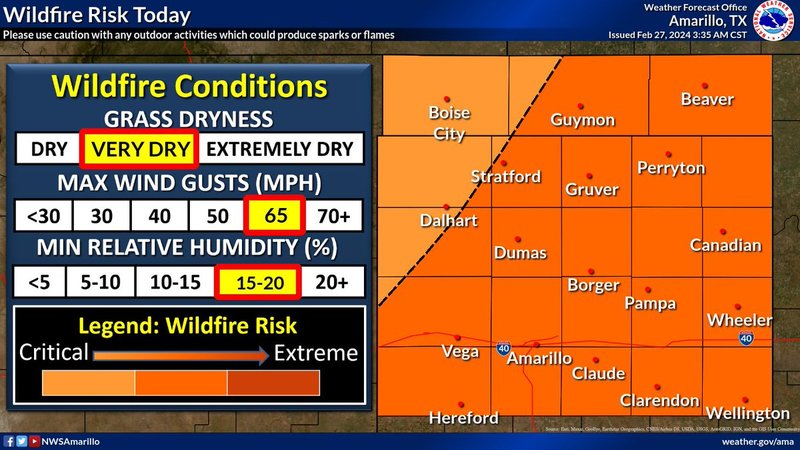
Temperature:
Overall, February is when the Region is consistently seeing cooler temperatures. Frequent cold fronts bring with them colder air masses from the northern United States and Canada, bringing freezing temperatures to the northern portions of the Region.
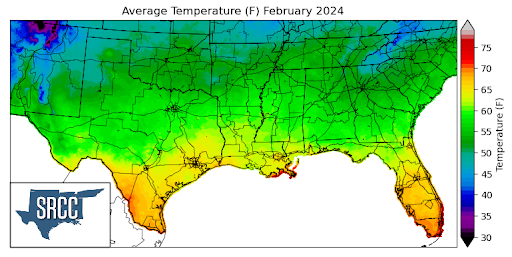
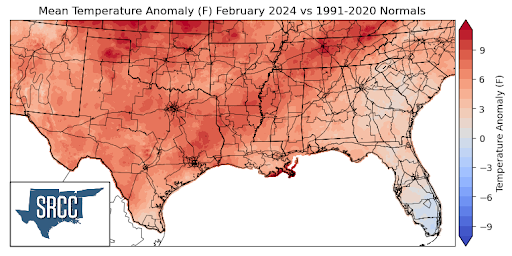
Temperatures were spring-like as we finished out meteorological winter, with weekly average temperatures above-normal throughout the Southern Region. The greatest departures from normal were observed in the Texas Panhandle and Nashville, TN where weekly average temperatures were 10 degrees Fahrenheit above normal. Temperatures were exceptionally high at the beginning of the week on Monday, Killen, TX reached 100°F, not only setting a daily high temperature record for the station, but becoming the first station in the U.S. to hit triple digits in 2024. Overall temperatures for the week ranged between 66 and 52 degrees Fahrenheit, about 5 degrees warmer than the week prior.
Precipitation:
With the majority of the Region being in a humid subtropical climate, rainfall is common at any point of the year. Frequently, during the winter months, cold fronts bring with them showers, thunderstorms, and even frozen precipitation to the Texas Panhandle, Oklahoma, Arkansas, and Tennessee. The boundary between the cold and warm air masses serves as a trigger mechanism for storms.
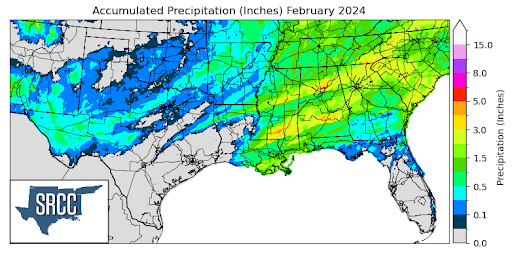
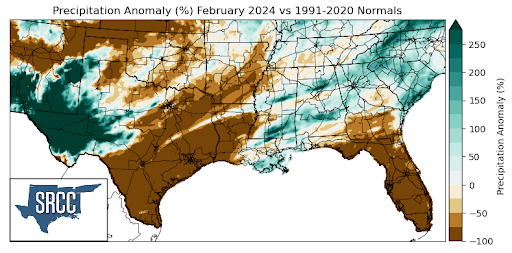
Most of the precipitation last week was concentrated in the eastern half of the Region. A squall line came through Arkansas and Tennessee from Wednesday night into Thursday morning as a cold front passed through the states. Precipitation in Louisiana, Mississippi, and Arkansas on Friday was attributed to a coastal low in the Gulf that brought ample moisture to the area. Finally, snow and frozen rain fell in the Texas Panhandle, helping to limit the further spread of the wildfires. The highest daily accumulation was seen in eastern Mississippi where Lowndes County saw 2.91 inches of rain via a CoCoRaHS report Friday.
